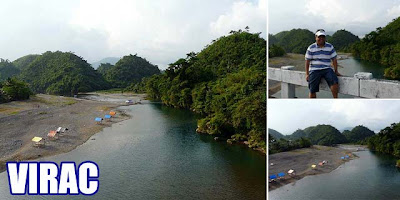 Every April 18, the International Council on Monuments and Sites (ICOMOS) celebrates the International Day for Monuments and Sites. There is a different theme every year. And this year, the theme is "Heritage and Science." There are two major streams which is covered here: "one being the role that science (and the scientific process) has played in the creation of heritage, and the other being the contribution that science (and technology) offers to the study of heritage."
Every April 18, the International Council on Monuments and Sites (ICOMOS) celebrates the International Day for Monuments and Sites. There is a different theme every year. And this year, the theme is "Heritage and Science." There are two major streams which is covered here: "one being the role that science (and the scientific process) has played in the creation of heritage, and the other being the contribution that science (and technology) offers to the study of heritage."So what heritage resources become the center of attention with this theme? As ICOMOS mentions, "A structure like the Ironbridge (UK) clearly shows the influence of science and technology in its construction; not only the bracing that disperses the load but also the mining, smelting, transport infrastructure and organised labour components that made the structure possible. The Temples of Angkor (Cambodia) not only illustrate an understanding of astronomy, but also of hydrology, mechanics and the requirements for tools suitable for the quarrying of the stone, placing the blocks, and the execution of the reliefs and frescos. The site of Maritime Greenwich (UK) is noted for its association with the science of astronomy and the determination of position and time; whilst being architecturally significant, it is primarily a monument to scientific endeavour. It is also a monument to the practical application of science, as the manufacture of the transit telescope and the precision timepieces depended on the availability of suitable materials and tools. Fundamentally, without science and technology, no monument or structure could exist."
 It's sad that the buildings in Manila which would been a perfect fit for this theme were destroyed during the war such as the Manila Observatory and the Bureau of Science Building (said to have some of the best laboratories in the world during its time). But there are a lot that still exist dating back to pre-colonial times such as the Stone Agricultural Calendars of Dap-ay Guiday in Besao (Bontoc, Mountain Province) which are National Cultural Treasures. Even the Ifugao Rice Terraces are a testament to advances in agriculture at that time.
It's sad that the buildings in Manila which would been a perfect fit for this theme were destroyed during the war such as the Manila Observatory and the Bureau of Science Building (said to have some of the best laboratories in the world during its time). But there are a lot that still exist dating back to pre-colonial times such as the Stone Agricultural Calendars of Dap-ay Guiday in Besao (Bontoc, Mountain Province) which are National Cultural Treasures. Even the Ifugao Rice Terraces are a testament to advances in agriculture at that time.The San Sebastian Church, a church made of metal, is also a testament to the science and technology behind its construction. I'm sure there are more examples out there. Do you have any?
Here are some ideas for celebrating April 18. I know it's too late for most heritage organizations to organize anything now. But you could keep this in mind for next year. Besides, we don't have to wait for April 18 to do all that because everyday is a heritage conservation day! In fact, May is Heritage Month in the Philippines!
The ICOMOS Philippine National Committee is meeting today at the Escuela Taller in Intramuros to celebrate the day.





